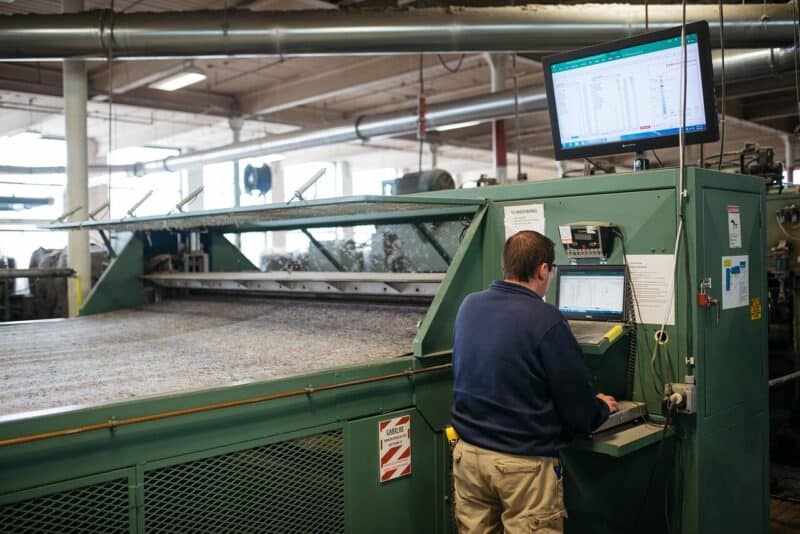Chinese Candy Production: A Professional Manufacturer’s Guide
Introdução
As people around the world develop a taste for unique flavors, have you thought about the huge opportunity in the diverse world of Chinese candy? Beyond the familiar sweets lies a multi-billion dollar industry rich with tradition and ready for new ideas. But how does someone move from an idea to large-scale, quality-controlled production? This is a question facing both new business owners and established manufacturers as they try to capture a share of this growing market.
This guide serves as a professional roadmap for manufacturers. We will break down the entire production process of Chinese candy, covering everything from traditional ingredient sourcing and modern manufacturing techniques to meeting international padrões de segurança alimentar, innovative product applications, and future market trends. This is not a consumer-level list; it is a strategic and operational blueprint designed for business-to-business use.
We will begin by exploring the market landscape before diving into core ingredients and sourcing. From there, we will detail the step-by-step manufacturing process and key equipment, followed by important discussions on quality control, innovative product development, and navigating the complexities of the global market.
The Landscape of Chinese Candy
History and Significance
To understand the manufacturing of Chinese candy, one must first appreciate its rich history. The evolution of these sweets is a journey from ancient medicinal remedies and exclusive royal treats to the everyday snacks enjoyed by millions today. Early forms of candy were often made with honey and fruit, intended to soothe throats or aid digestion. Over centuries, techniques improved, giving rise to complex sweets like Dragon’s Beard Candy, a hand-pulled sweet so fine it was once reserved for the Emperor.
This heritage is embodied in famous products that have stood the test of time. White Rabbit Creamy Candy, with its edible rice paper wrapper, brings back memories for generations. Haw Flakes, thin discs of dried hawthorn fruit, have been a popular children’s snack for decades. Ting Ting Candy (Ting Tang), a hard maltose candy shattered into pieces with a chisel, is as much a piece of street theater as it is a treat. These products are not just sweets; they are cultural touchstones.
The Modern Market
The contemporary Chinese candy market is a powerful economic force. The Chinese confectionery market was valued at over USD 17.5 billion in 2023, with a projected compound annual growth rate (CAGR) of approximately 5.2% through 2028. This growth is driven by rising disposable incomes, urbanization, and a consumer base that is increasingly open to both traditional flavors and novel experiences.
While legacy brands maintain a strong foothold, the market is characterized by a dynamic tension between tradition and innovation. Consumer preferences are shifting. There is a growing demand for premium ingredients, healthier formulations with reduced sugar, and sophisticated packaging suitable for gifting. At the same time, a resurgence of national pride, known as “Guochao,” has renewed interest in heritage brands and authentic flavors, creating opportunities for manufacturers who can skillfully blend tradition with modern quality standards and marketing.
Core Ingredients & Sourcing
Traditional Foundation Ingredients
The soul of authentic Chinese candy lies in its foundational ingredients. Understanding their properties is the first step toward creating a genuine product.
- Maltose: This thick, sticky syrup, derived from fermented grains like barley or rice, is the backbone of many traditional hard and chewy candies. It provides a unique, less-intense sweetness than regular sugar and is critical for achieving the characteristic “pull” and texture in candies like Ting Tang. High-quality, slow-fermented maltose offers superior flavor and workability.
- Cane Sugar & Rock Sugar: While standard cane sugar is used, rock sugar (Bing Tang) is often preferred for its clear, clean sweetness. It is crystallized sugar that is less sweet than granulated sugar and is used to create hard candies with glass-like clarity and a smooth mouthfeel.
- Nuts & Seeds: Peanuts, sesame seeds (both white and black), and walnuts are not mere inclusions; they are core components. Roasted peanuts provide the crunch in Peanut Brittle (Hua Sheng Tang), while toasted sesame seeds offer a deep, nutty aroma essential for Sesame Candy (Zhi Ma Tang).
- Fruits: The use of preserved and dried fruits provides a distinctive sweet-tart flavor profile. Hawthorn is the star of Haw Flakes, while preserved plums (Hua Mei), dates (Jujube), and longan are frequently used in both hard and soft candies.
Modern & Specialty Ingredients
To meet modern consumer expectations and achieve specific textures, manufacturers now use a wider range of ingredients.
- Milk Powder & Butter: Essential for creating the creamy, milky texture of modern classics like White Rabbit candy or milk nougats. Full-fat milk powder and high-quality butter contribute to a rich mouthfeel and flavor.
- Gelatin & Pectin: These gelling agents are essential for producing the chewy, bouncy “QQ” texture popular in modern Chinese gummy candies. The source (e.g., bovine vs. porcine gelatin) and bloom strength are critical technical specifications.
- Natural Flavors & Colorants: The market is shifting away from artificial additives. Manufacturers are increasingly using natural fruit extracts, osmanthus, ginger, and matcha for flavor. For color, sources like beet, spirulina, and turmeric are preferred to meet clean-label demands.
Sourcing and Vetting
Sourcing is a strategic function. Finding reliable suppliers for specialty items like high-purity maltose or specific regional fruits (e.g., Shandong hawthorn) is extremely important. We recommend a thorough supplier vetting process that goes beyond price. Request samples for production trials and always verify supplier certifications. Credentials like ISO 22000 (Food Safety Management) and HACCP (Hazard Analysis and Critical Control Points) are essential indicators of a supplier’s commitment to quality and safety.
| Categoria do ingrediente | Traditional Examples | Modern/Alternative Examples | Primary Function in Candy |
| Adoçantes | Maltose, Rock Sugar, Honey | Corn Syrup, Isomalt, Stevia | Sweetness, Texture, Bulk |
| Fats & Emulsifiers | Lard (historical), Peanut Oil | Butter, Milk Powder, Soy Lecithin | Creaminess, Mouthfeel, Stability |
| Inclusions | Peanuts, Sesame Seeds, Walnuts | Almonds, Pistachios, Freeze-dried Fruit | Texture, Flavor, Visual Appeal |
| Flavoring Agents | Ginger, Osmanthus, Hawthorn | Natural Fruit Extracts, Vanilla, Matcha | Aroma and Taste Profile |
| Gelling Agents | Rice Flour, Starch | Gelatin, Pectin, Agar-Agar | Structure (Chewy/Gummy) |
O processo de fabricação
This section provides a step-by-step breakdown of the production workflow, framed from the perspective of an experienced production manager.
Stage 1: Prep and Inspection
Production excellence begins before the cooking even starts. All raw materials must be carefully prepared and inspected. Powders like sugar and flour are sifted to remove clumps and foreign matter. Nuts and seeds are inspected for quality and then processed to develop flavor. For example, to achieve the optimal crunch and aroma in peanut candy, we roast peanuts at a consistent 150°C for 15-20 minutes until they reach a uniform golden brown. This precision prevents the bitter taste of over-roasted nuts or the raw taste of under-roasted ones.
Stage 2: Cooking and Mixing
This is the heart of the candy-making process, where science and skill come together. The sugar syrup is cooked in large, often steam-jacketed, kettles. Our experience shows that precise temperature control at this stage is absolutely essential. The final temperature determines the candy’s texture. For a hard candy like peanut brittle, the syrup must reach the “hard crack” stage (149-154°C). For a chewy nougat, it’s cooked to the “soft ball” stage (112-116°C). Using digital thermometers and automated controls is essential for consistency at scale.
The mixing sequence is equally critical. Fats like butter are added to prevent crystallization and add richness. Inclusions like nuts are typically mixed in last to maintain their crunch. Flavorings, especially volatile extracts, are added at the end of the cooking process, just before cooling, to prevent them from burning off.
Stage 3: Pulling and Aeration
For chewy candies like traditional nougat or the famous Dragon’s Beard Candy, this stage is what creates their signature light texture. The warm candy mass is stretched and folded repeatedly, either by hand on oiled hooks in artisanal settings or by automated pulling machines in industrial lines. A common mistake we see is insufficient pulling, which results in a dense, overly hard final product. The goal is to incorporate millions of microscopic air bubbles, which makes the candy opaque and gives it a delicate chew. The process typically follows these steps:
- The warm candy mass is placed on the machine’s arms.
- The arms begin to stretch and fold the candy in a continuous, figure-eight motion.
- The process continues for a set time (e.g., 5-10 minutes) until the candy transforms from a translucent, dense blob into an opaque, silky, and aerated mass.
- The final pulled candy has a layered, fibrous structure.
Stage 4: Forming and Shaping
Once the candy mass is cooked and prepared, it must be shaped. The mass is transferred to a cooling table and then fed into a roller and sheeting system. This equipment uses a series of rollers to create a continuous, uniform sheet of candy at a precise thickness. From here, the sheet moves to a cutting or stamping line. For White Rabbit candy, this would be a machine that cuts the sheet into precise rectangles. For Haw Flakes, a stamping machine punches out the iconic small discs. This automated process ensures every piece has a consistent weight and shape, which is crucial for packaging and quality perception.
Stage 5: Cooling and Curing
The final stage before packaging is cooling and setting. Formed candies are transported via conveyor belt through a long cooling tunnel. These tunnels use controlled, circulating cold air to bring the candy down to room temperature quickly and evenly. This rapid cooling is critical for hard candies to achieve their glassy structure and prevent stickiness. For other candies, like gummies or some nougats, a period in a climate-controlled curing room may be necessary. This allows the candy to set fully, achieve its final texture, and ensure optimal shelf stability by managing moisture content.
Key Production Equipment
Capital investment in the right equipment is fundamental to scaling production efficiently and maintaining quality. The machinery needed varies significantly with production scale.
Small-Scale & Artisanal
For pilot runs or an artisanal business, the focus is on versatile, robust, and often manual equipment. Production at this scale prioritizes flexibility over high throughput.
- Heavy-Duty Stand Mixers: Essential for making nougats and other aerated confections.
- Copper Cooking Pots: Favored by artisans for their excellent heat conductivity, allowing for precise temperature control when cooking sugar syrups.
- Marble Slabs: Provide a cool, non-stick surface for working with and cooling hot candy masses by hand.
- Manual Candy Cutters: Guillotine or roller-style cutters for portioning slabs of candy.
Medium to Large-Scale
As production scales, automation and specialized machinery become necessary to ensure consistency and efficiency.
- Industrial Cookers & Mixers: Steam-jacketed kettles with agitation systems allow for large-batch cooking with even heat distribution, preventing scorching. Continuous cookers are used for very high-volume lines.
- Depositing Lines: For producing gummies and hard candies, depositors precisely portion the liquid candy mass into molds at high speeds.
- Pulling Machines: These automated machines replicate the traditional pulling process, stretching and aerating large batches of candy for nougats and chewy varieties.
- Rolling & Cutting Lines: Integrated systems that take a candy mass, form it into a rope or sheet of a specific diameter or thickness, and then cut it into uniform pieces.
- Wrapping Machines: High-speed flow wrappers (for fin-sealed packs) and twist wrappers are essential for the final packaging stage, protecting the product and preparing it for retail.
| Escala de produção | Key Equipment | Suitable For | Estimated Throughput |
| Artisanal/Pilot | Copper Cooking Pots, Marble Slab, Manual Cutters | Hard candies, small-batch nougat | Low (<50 kg/day) |
| Medium-Scale | Steam-Jacketed Kettle, Semi-auto Depositor, Cooling Table | Gummy candies, layered candies | Medium (50-500 kg/day) |
| Large-Scale | Continuous Cooking System, Automated Depositing Line, Cooling Tunnel, Flow Wrappers | High-volume hard candies, creamy candies, gummies | High (>500 kg/day) |
Quality Control & Safety
A trustworthy brand is built on an unwavering commitment to quality and safety. For food manufacturers, this is not optional; it is the foundation of the business, especially when targeting international markets.
Pontos críticos de controle
Implementing a HACCP plan involves identifying Critical Control Points (CCPs) where hazards can be prevented or eliminated. In Chinese candy production, these are key areas of focus:
- Raw Material Inspection: This is the first line of defense. All incoming ingredients, especially nuts, dairy, and sesame, must be tested for contaminants like aflatoxins and checked against allergen specifications.
- Cooking Temperature & Time: This is a CCP for microbiological safety. Ensuring the sugar syrup reaches the correct temperature for a sufficient duration eliminates harmful bacteria.
- Metal Detection: After the candy is formed but before it is wrapped, it must pass through a calibrated metal detector to ensure no metal fragments from machinery have contaminated the product.
- Packaging Seal Integrity: The final package seal is a CCP for shelf life and safety. Regular checks must be performed to ensure seals are airtight, protecting the candy from moisture and microbial contamination.
Navigating Certifications
To operate professionally and gain access to major retailers, certain certifications are standard.
- HACCP: A systematic, preventive approach to food safety that is a baseline requirement in most developed markets.
- ISO 22000: A globally recognized standard for a comprehensive food safety management system, covering everything from communication to system management.
- BRCGS/SQF: The British Retail Consortium Global Standards (BRCGS) and Safe Quality Food (SQF) are Global Food Safety Initiative (GFSI) benchmarked standards. These are often required by major retailers in Europe, North America, and Australia, as they demonstrate the highest level of safety and quality management.
Allergen Management
Many popular Chinese candies contain major allergens like peanuts, tree nuts, sesame, and dairy. A robust allergen management program is therefore critical. This includes dedicated production lines or rigorous cleaning and sanitation protocols between runs, clear color-coding of tools and containers, segregated storage of allergenic ingredients, and precise labeling that complies with regulations in the target market.
Industry Applications & Innovation
To truly succeed, manufacturers must think beyond simply replicating traditional candies. The real opportunity lies in innovative product development and cross-category applications.
Cross-Category Innovations
The unique flavors and textures of Chinese candy can be leveraged in other food categories to create exciting new products.
- Bakery & Confectionery Hybrids: Imagine a shortbread cookie with crumbled ginger candy, a brownie studded with pieces of chewy White Rabbit candy, or a tart topped with finely ground Haw Flakes for a sweet-tart finish.
- Beverage Syrups: The aromatic profiles of traditional ingredients can be transformed into premium syrups. An osmanthus or red date ginger candy syrup could become a signature offering for cafes, cocktail bars, and bubble tea shops.
- Ice Cream & Frozen Desserts: The textural contrast of Chinese candies makes them ideal as inclusions. Crushed peanut brittle or chewy sesame candy pieces can be used as mix-ins for premium ice cream, adding both flavor and a satisfying crunch.
Health-Conscious Formulations
The global wellness trend is a major driver of innovation. Adapting traditional recipes to meet this demand can open up new consumer segments.
- Sugar Reduction: Experiment with replacing a portion of the sucrose or maltose with natural, low-calorie sweeteners like monk fruit extract, stevia, or allulose. This allows for the creation of “low sugar” or “no added sugar” versions of classic candies.
- Functional Ingredients: Elevate candy from a simple treat to a functional snack. Incorporate ingredients with perceived health benefits, such as antioxidant-rich goji berries, collagen for skin health, or probiotics into gummy candies.
Premium & Gifting Market
There is a strong market for high-end, giftable confections. This involves moving away from mass-market production and focusing on an artisanal approach.
- Develop premium versions of classics using single-origin peanuts, organic honey, or high-grade matcha.
- Invest in luxury packaging—elegant tins, beautifully designed boxes, and sophisticated branding—that communicates the quality of the product inside and justifies a higher price point, especially for seasonal and festive occasions like Chinese New Year.
Packaging, Branding, & Exporting
The final steps in bringing a product to market—packaging, branding, and logistics—are just as critical as the production process itself.
Packaging for Freshness
The primary role of packaging is to protect the product’s quality and extend its shelf life. The choice of material has significant implications for both function and cost. A moisture barrier is particularly important for hard candies to prevent stickiness, while an oxygen barrier is crucial for candies with nuts to prevent the oils from going rancid.
| Material | Prós | Contras | Melhor para |
| Twist-Wrap Wax Paper | Traditional look, low cost, good for hard candy | Low moisture barrier | Individual hard candies, creamy chews |
| Laminated Film (Flow Wrap) | Excellent moisture/oxygen barrier, high-speed automation | Higher cost, requires machinery | All candy types, especially for export |
| Stand-up Pouches | High perceived value, resealable, great for branding | Highest cost, slower filling speeds | Gummy candies, mixed assortments |
| Rigid Tins/Boxes | Premium feel, ideal for gifting, reusable | Bulky, expensive | High-end gift sets, seasonal products |
Branding Strategies
Successful branding for Chinese candy often involves a delicate balance. It must feel authentic and respectful of the candy’s cultural heritage, yet also appear modern and appealing to a global audience. Storytelling is key. Communicate the history of the candy, the quality of the ingredients, and the craftsmanship involved. Use clean, elegant design that can stand out on a crowded international shelf while hinting at its traditional roots.
Export Considerations
Exporting introduces a new layer of complexity. Thorough research is essential.
- Labeling Requirements: Each country or region has its own rules. The FDA in the USA and EFSA in the EU have strict regulations regarding ingredient lists, net weight, nutritional information, and especially allergen warnings. All information must be accurate and formatted correctly.
- Tariffs and Logistics: Understand the import duties, taxes, and tariffs for your target markets. Work with an experienced freight forwarder who can handle customs clearance and ensure your product arrives in good condition.
Navigating Future Trends
Staying ahead of the curve is essential for long-term success. The Chinese candy market is evolving rapidly, driven by several key trends that manufacturers should monitor closely.
- “Guochao” (National Trend): A powerful movement, particularly among younger consumers, that celebrates domestic brands, traditional culture, and national pride. This means that leaning into authentic flavor profiles, heritage stories, and culturally relevant designs is more effective than ever.
- Snackification & Portion Control: Lifestyles are becoming busier, and consumers are moving away from traditional meal times. They prefer smaller, individually wrapped candy portions that allow for on-the-go consumption and mindful indulgence.
- Texture is King: Beyond flavor, consumers are seeking novel and complex textural experiences. The chewy, bouncy texture known as “QQ” is highly desirable, as are products that offer multiple textures in one bite, such as a soft-filled center within a crispy shell.
- Flavor Fusion: Innovation is happening at the intersection of cultures. We are seeing a rise in products that combine traditional Chinese flavors with Western profiles, such as hawthorn with dark chocolate, or ginger candy with a sea salt caramel twist.
- E-commerce & Social Commerce: For younger demographics, brand discovery and purchasing happen online. A strong digital presence is no longer optional. Visually driven platforms like TikTok, Instagram, and Xiaohongshu are crucial for showcasing the aesthetics of candy, its packaging, and its unique story.
Conclusion: Your Blueprint for Success
We’ve journeyed through the entire process of Chinese candy production, from its deep cultural roots to the modern factory floor and onto the competitive global market. This guide has provided a comprehensive blueprint for aspiring and current manufacturers looking to excel in this exciting industry.
Success in this space rests on three fundamental pillars. The first is authenticity, which must be present in your choice of ingredients, your recipes, and the story you tell. The second is precision, demonstrated through careful manufacturing processes, rigorous quality control, and adherence to international safety standards. The final pillar is innovation, which is the key to differentiating your brand through new product applications, health-conscious formulations, and a keen understanding of future market trends.
By mastering these elements, manufacturers can not only create delicious and authentic Chinese candy but also build a lasting, profitable brand that captivates and delights customers worldwide.
Perguntas frequentes (FAQ)
What is the average shelf life?
The shelf life varies significantly by candy type. Glassy hard candies, when properly wrapped with a good moisture barrier, can last 12-24 months. Chewy or creamy candies like White Rabbit have a shorter shelf life of 6-12 months. Candies with a high nut content are most susceptible to oil rancidity, limiting their shelf life to 6-9 months, even with excellent packaging.
How can I make a vegan White Rabbit?
Creating a vegan version of a dairy-based creamy candy is a common R&D challenge. We recommend using a blend of coconut milk powder and oat milk powder to replace the dairy milk powder. For the fat component, a combination of refined coconut oil and shea butter can mimic the richness and melting properties of butter. Achieving the exact chewy texture will require experimentation with cooking times and temperatures.
What is the biggest initial investment?
For a small- to medium-scale production line, the most significant initial capital expenses are typically the cooking and wrapping equipment. A high-quality, temperature-controlled steam-jacketed kettle is crucial for consistent cooking, and a reliable semi-automatic flow wrapper or twist wrapper is essential for achieving professional packaging and adequate shelf life. These two pieces of machinery represent the core of a modern production setup.
Are there traditional food colorants?
Traditionally, the color in Chinese candy came directly from the ingredients themselves—the deep brown from caramelized sugar, the rich red from hawthorn fruit, or the dark hue from black sesame seeds. In modern clean-label production, manufacturers aim to replicate this by using approved natural colorants like beet extract (for red/pink), turmeric or beta-carotene (for yellow/orange), and spirulina (for green).
- FDA - Princípios e diretrizes de aplicação do HACCP https://www.fda.gov/
- BRCGS - Padrões globais de segurança alimentar https://www.brcgs.com/
- ISO 22000 - Sistemas de gerenciamento de segurança de alimentos https://www.iso.org/
- Wikipedia - Confeitaria https://en.wikipedia.org/wiki/Confectionery
- OSHA – Candy and Confectionery Products Manufacturing Standards https://www.osha.gov/
- Instituto de Tecnólogos em Alimentos (IFT) https://www.ift.org/
- NSF International – Food Manufacturing Certification https://www.nsf.org/
- ScienceDirect – Food Science and Confectionery Research https://www.sciencedirect.com/
- Scribd – HACCP and Food Safety Documentation https://www.scribd.com/
- SlideShare – Food Safety Standards Presentations https://www.slideshare.net/











